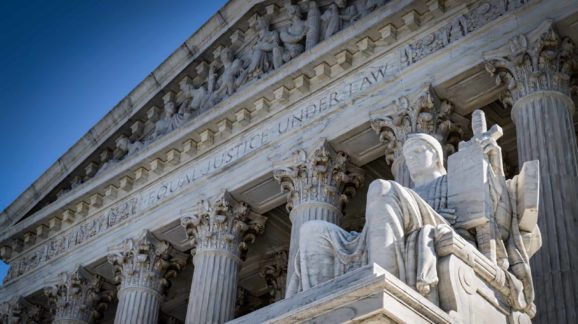Will the Supreme Court Rein in the EPA?
The Supreme Court will soon hear oral argument in West Virginia v. Environmental Protection Agency. The Court will examine the lawfulness of the Obama administration’s October 2015 Clean Power Plan (CPP) and the Trump administration’s June 2019 Affordable Clean Energy (ACE) Rule, which repealed and replaced the CPP.
Both rules target power plant carbon dioxide (CO2) emissions. However, ACE aimed to improve the environmental performance of coal power plants (measured in pounds CO2 per megawatt hour), whereas the CPP aimed to squeeze coal power plants out the electricity marketplace.
Petitioners argue that the CPP not only exceeds the EPA’s statutory authority but also implicates the Supreme Court’s “major rules” doctrine. Under that doctrine, agency decisions of vast economic and political significance that lack a clear congressional authorization are unlawful. As Judge Brett Kavanaugh explained in his dissent in United States Telecom Ass’n v. FCC (2017), the major rules doctrine “helps preserve the separation of powers and operates as a vital check on expansive and aggressive assertions of executive authority.”
In the CPP, the EPA claimed authority to restructure the U.S. electric supply system by shifting generation from coal to gas power plants, and from fossil-fuel power plants to renewables. Such authority would empower the EPA to impose tens to hundreds of billions of dollars in costs on power producers and consumers, decimate the coal industry, and vitiate States’ congressionally-protected power to plan electricity resource development within their borders.
By implication, the EPA claimed authority to force a shift in production, even to the point of bankrupting disfavored companies, within any CO2-emitting economic sector and industry.
Section 111(d) of the Clean Air Act (CAA), the CPP’s purported statutory basis, contains nothing remotely resembling a clear statement authorizing the EPA to do any of those things.
CAA section 111 directs the EPA to establish emission performance standards for new (future) stationary sources, and a process whereby states can impose standards for existing (already built) sources. Performance standards are to reflect the “best system of emission reduction” (BSER) that the EPA determines to be “adequately demonstrated” (roughly meaning effective and affordable).
Since “systems” are designed for and apply to “sources,” the legal meaning of “system” depends on that of “source.” CAA 111 defines stationary source as “any building, structure, facility, or installation which emits or may emit air pollutants.” Consequently, a bona fide BSER must be based on measures that can be applied at and by the source.
Consistent with that reasoning, all previous BSERs, whether for new sources under CAA 111(b) or existing sources under 111(d), were based on reductions achievable at and by the individual sources.
The Obama administration refused to accept that limitation because there are no affordable technologies for substantially reducing CO2 emissions from existing power plants.
The closest facsimile would be equipment upgrades that reduce emissions at the margins by enabling coal power plants to operate more efficiently. However, making coal generation more efficient would not advance and might even impede President Obama’s goal to “finally make renewable energy the profitable kind of energy in America.”
So, the EPA came up with a scheme to impose unattainable performance standards on existing fossil-fuel power plants. For example, the CPP set a standard of 1,305 lbs. CO2/MWh for existing coal power plants (many of which are decades old) even though new highly-efficient supercritical pulverized coal units emit more 1,700 lbs. CO2/MWh.
How then could existing fossil-fuel facilities comply? The CPP gave owners and operators the option to purchase power from, invest in, or buy emission-reduction credits from lower- and zero-emission facilities elsewhere on the grid. Such “generation shifting” is the CPP’s principal BSER.
Read the full article at Real Clear Energy.
